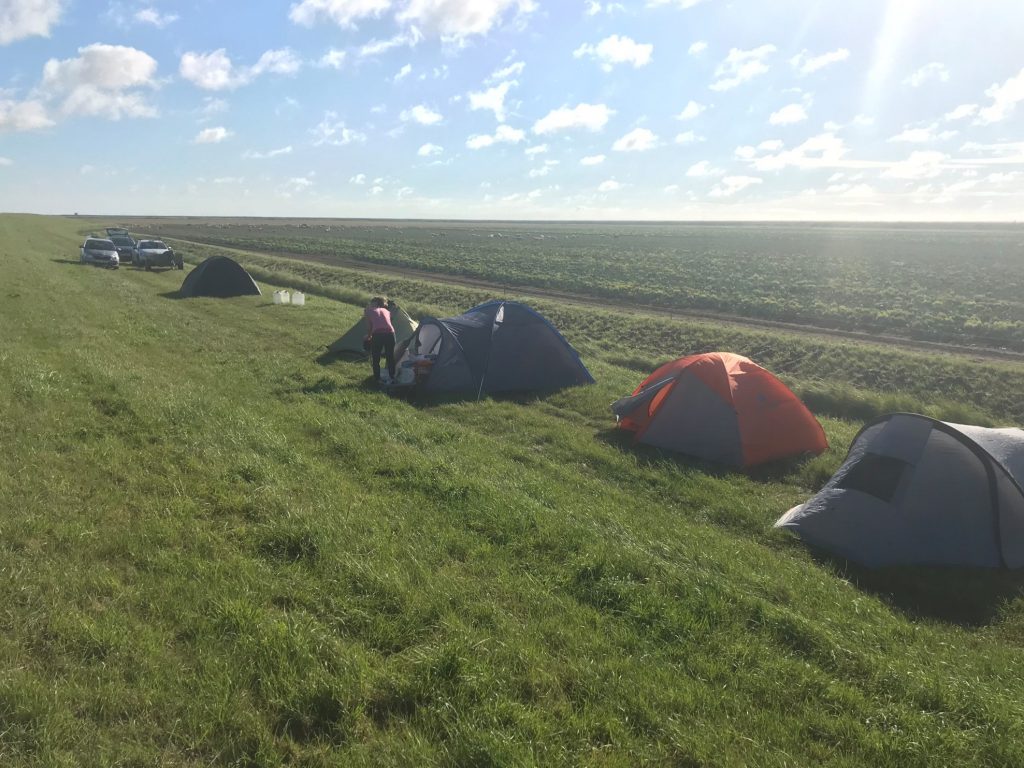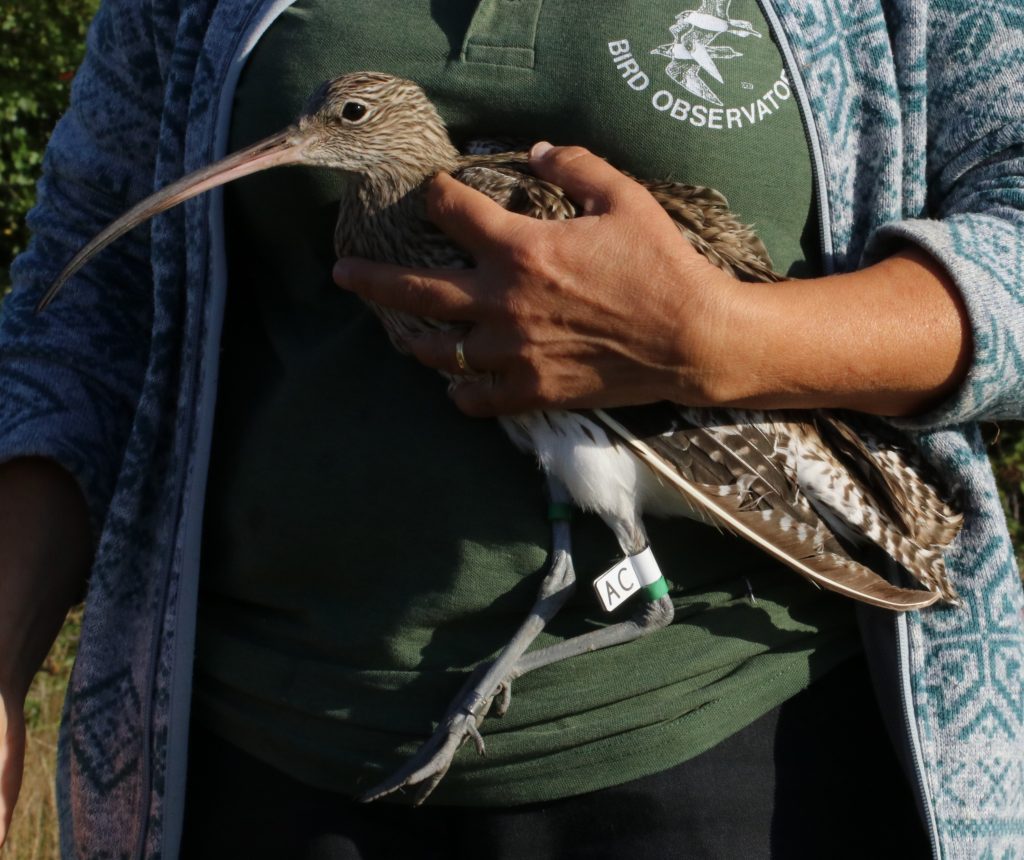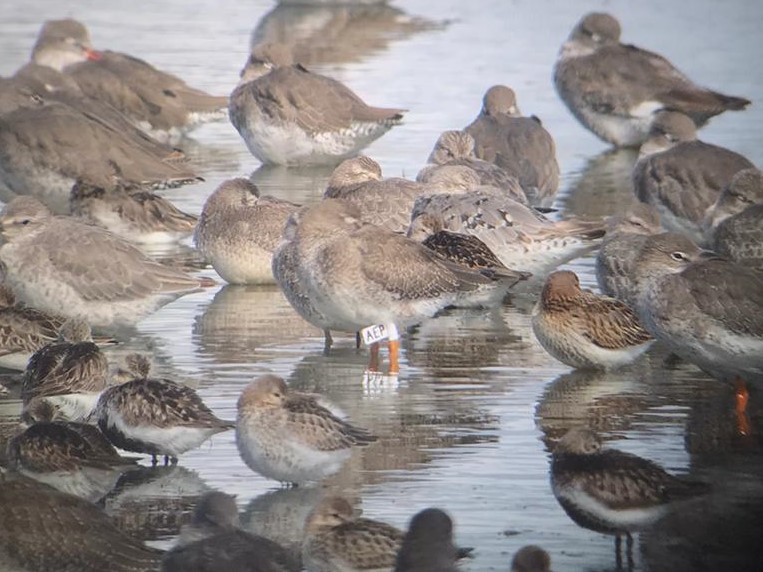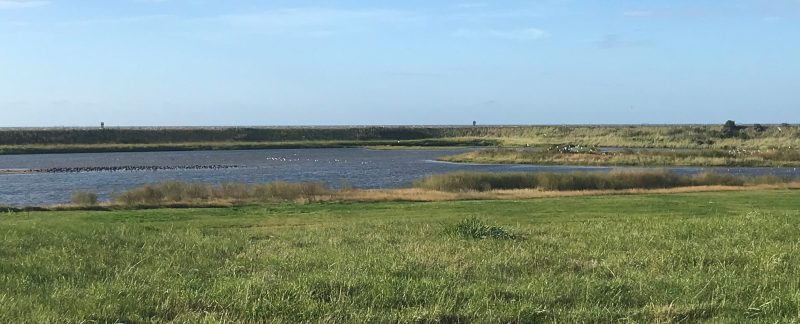Background
The Covid-19 pandemic has had and continues to have a significant impact on all our lives. It has affected our health and limited our ability to see friends and family, travel and conduct work as normal. We hope that all WWRG members have remained well over the last six months and stay healthy.
Throughout the pandemic, there have been regular updates and guidance on ringing activities from BTO HQ, following advice from Government and the Country Agencies. Senior members of WWRG kept this under constant discussion to work out if we could carry out any fieldwork within the rules and in a way that minimised risks to members and stakeholders. In early August, after the compilation of current guidance and a review of Covid-19 procedures successfully adopted by other ringing groups, the decision was made that we could run a very restricted short trip in late August, whilst following a Covid-19 secure risk assessment and with the renewed approval of our landowners. A thorough risk assessment was worked out by senior team members, led by Lucy and Steve who would be leading the Norfolk and Lincolnshire teams respectively. To mention just a few of the new procedures, this included the use of masks, single households in accommodation, camping and teams limited to six individuals. A special thanks should be extended to all those involved in negotiating the tricky minefield of Covid-19 secure guidance and organising the logistics that allowed WWRG fieldwork to continue albeit in a limited way.
Once the decision was made to go ahead in August, teams were arranged for each side of the Wash with the priority given to experienced individuals and households with multiple group members, due to the restricted team sizes and benefit of single households not needing to social distance. Of course, this was with regret as our group has always been a very social bunch with a heavy focus on training and involving everyone.
However, further group members were involved in August fieldwork as they had decided to take breaks that month, either at our base, or camping locally. In total, the ‘August holiday resighters’, alongside the trip teams, achieved an impressive haul of resightings for the month (see below). Lizzie, Niamh, Chris and Ryan were ‘holidaying’ at our base before the trip and were able to prepare for the coming fieldwork, doing many of the regular tasks normally done during the June maintenance weekend (e.g. testing cables) and new ones such as sanitising water containers and locating camp stoves etc. Thanks to the four of them for doing this.
Friday 21 August
Lizzie and Ryan arrived on the Lincolnshire side early on the 21st to get in some early recces over the morning high tide; Lizzie covering the Horseshoe going north and Ryan going south. Unfortunately, they didn’t locate any promising options for a field catch, with the majority of Curlew and Godwit in the area either moving north or waiting out the tide on exposed saltmarsh between the Horseshoe and the northern pumping station.
Ryan did locate a flock of 50 Curlew attempting to land on a cultivated field in the Leverton area but these were put off by agricultural work, joining a flock of 200 heading south towards Freiston. After consulting the weather forecast for the following night/day, no cannon-netting or mist-netting was possible and so a plan was made for recces to be repeated the following morning and for the rest of the team to arrive sometime that afternoon. Lizzie and Ryan relived an evening of Wash trips of the past, setting up camp and cooking dinner on the group’s camp stoves that were previously used to cook for the whole team inside a barn.

Saturday 22 August
Unfortunately, the Lincolnshire recces on Saturday yielded similar results, the field Ryan had identified the previous day held no birds and, with more saltmarsh exposed, the Curlew and Godwit again waited out the tide on the saltmarsh. The Horseshoe held 300+ Oystercatchers, 100 Redshank and approximately 30 Knot on both days.
The Norfolk team were much more successful on their morning recces, identifying two options for cannon-netting. The first a typical option of approximately 200 Sanderling on Snettisham North and the second a nice flock of 50 Curlew on the newly ditched area on Ken Hill. With the wind still preventing mist-netting, the decision was made for the Norfolk team to set and attempt for the Curlew on the evening tide then reman the following morning if unsuccessful. Whilst the Lincolnshire team, now at full strength, set for the Sanderling on Snettisham, the Norfolk team manned their net but did not catch.
Sunday 23 August
Both teams were successful on the Sunday morning. The Norfolk team had a potential catch of around 20 birds just seconds after manning, but something spooked them just at the wrong moment and they lost most to the south, ending up with a consolation catch of two. The two Curlew became the first to have our new colour-mark scheme of an individually marked flag and two green marker rings as part of our ongoing project to understand how these birds use the Wash, as well as working out their survival rates. The Lincolnshire team (set on the beach at Snettisham North) were more successful with a very nice catch of 113 Sanderling and three Turnstone.

Snettisham North
| Species | New | Retrap | Total |
| Sanderling | 98 | 15 | 113 |
| Turnstone | 3 | 0 | 3 |
| Totals | 101 | 15 | 116 |
Ken Hill
| Species | New | Retrap | Total |
| Curlew | 2 | 0 | 2 |
| Totals | 2 | 0 | 2 |
No further cannon-netting attempts were made during the trip with the priority given to mist-netting as the weather was improving. On the night of the 23rd, both teams were out mist-netting. The Norfolk team running the White Barn pool only due to the limited team, setting two single lines of nets (a six and a two on different pools) perpendicular to the light breeze, but catching well over 100 birds, including nearly 100 Redshank. The Lincolnshire team conducted the second-ever session at Freiston Shore particularly to deploy further Redshank leg flags for the new WWRG colour-mark project looking at survival and movements of this species. It proved to be a very successful evening for both teams with good numbers from a variety of species caught (see totals). We started our new colour-marking project on Knot, part of a flyway initiative to understand more about their movements, and also marked the Grey Plover caught at Terrington and the Redshank at Freiston.

Terrington Marsh
| Species | New | Retrap | Total |
| Grey Plover | 1 | 0 | 1 |
| Knot | 5 | 0 | 5 |
| Dunlin | 17 | 0 | 17 |
| Black-tailed Godwit | 2 | 0 | 2 |
| Redshank | 97 | 1 | 98 |
| Turnstone | 6 | 0 | 6 |
| Whimbrel | 1 | 0 | 1 |
| Totals | 129 | 1 | 130 |
Freiston Shore
| Species | New | Retrap | Total |
| Knot | 5 | 0 | 5 |
| Dunlin | 16 | 0 | 16 |
| Redshank | 66 | 1 | 67 |
| Turnstone | 23 | 0 | 23 |
| Totals | 110 | 1 | 111 |
Monday 24 August
The Monday morning brought the Norfolk team’s trip to a close. In Lincolnshire, Steve, Will and Ryan headed to Freiston Shore to resight the recently marked Redshank in the roost in front of the hide. This proved to be very worthwhile with 12 WWRG Redshank, one Scottish Redshank and five Norwegian Oystercatchers observed at high tide. The Lincolnshire team attempted a final mist-netting session on the night of the 24th at Leverton catching well and recaptured one of the Redshank colour-marked the evening before.
Leverton Outgate
| Species | New | Retrap | Total |
| Knot | 6 | 0 | 6 |
| Dunlin | 12 | 0 | 12 |
| Black-tailed Godwit | 1 | 0 | 1 |
| Redshank | 10 | 2 | 12 |
| Turnstone | 1 | 0 | 1 |
| Greenshank | 1 | 0 | 1 |
| Totals | 31 | 2 | 33 |
August 2020 proved to be a successful month with 813 ‘captures’ (ringing + resightings). This was excellent for the continuation of the group’s long-running datasets. Kickstarting our new Knot and Redshank colour-mark projects is also a great outcome and we hope both species generate some exciting resightings soon. Our first trip under Covid-19 guidelines went very well overall. Minor adjustments were made as experience increased but, for the most part, they were easy to follow, allowed us to stay within the rules and importantly kept the risk minimal for all involved. Though getting out in the field was certainly welcomed by the group members present, it must be said that it was very sad to not have our usual inclusive, large teams during August. We all look forward to when that can happen again!
Trip Ringing Totals
| Species | New | Retrap | Colour-marked | Overall Total |
| Black-tailed Godwit | 3 | 0 | – | 3 |
| Curlew | 2 | 0 | 2 | 2 |
| Dunlin | 45 | 0 | – | 45 |
| Greenshank | 1 | 0 | 1 | 1 |
| Grey Plover | 1 | 0 | 1 | 1 |
| Knot | 16 | 0 | 16 | 16 |
| Redshank | 173 | 4 | 55 | 177 |
| Sanderling | 98 | 15 | – | 113 |
| Turnstone | 33 | 0 | 0 | 33 |
| Whimbrel | 1 | 0 | – | 1 |
| Total | 373 | 19 | 75 | 392 |
August Resighting Totals (15–24 August)
| Species | Total Sightings | Individuals | WWRG | Non-WWRG |
| Curlew | 179 | 98 | 98 | 0 |
| Bar-tailed Godwit | 162 | 95 | 95 | 0 |
| Turnstone | 38 | 17 | 17 | 0 |
| Knot | 16 | 11 | 0 | 11 |
| Oystercatcher | 6 | 5 | 0 | 5 |
| Redshank | 15 | 14 | 12 | 2 |
| Dunlin | 4 | 2 | 0 | 2 |
| Sanderling | 1 | 1 | 0 | 1 |
| Total | 421 | 243 | 222 | 21 |

